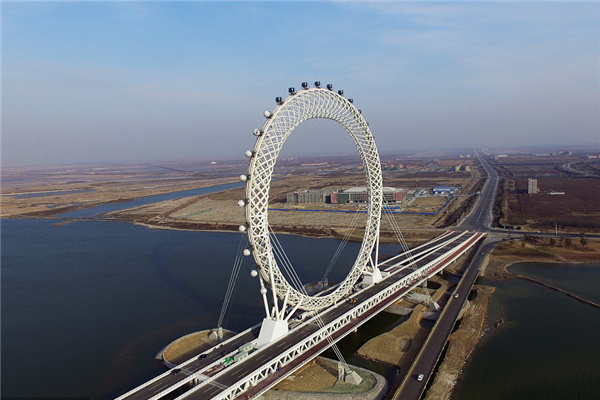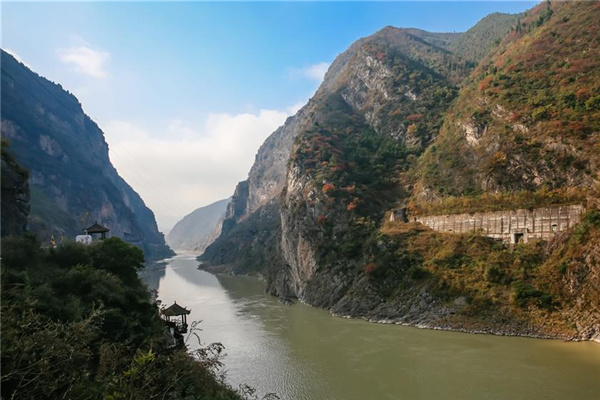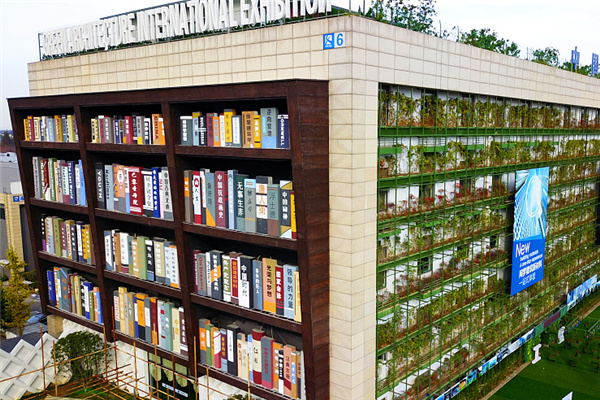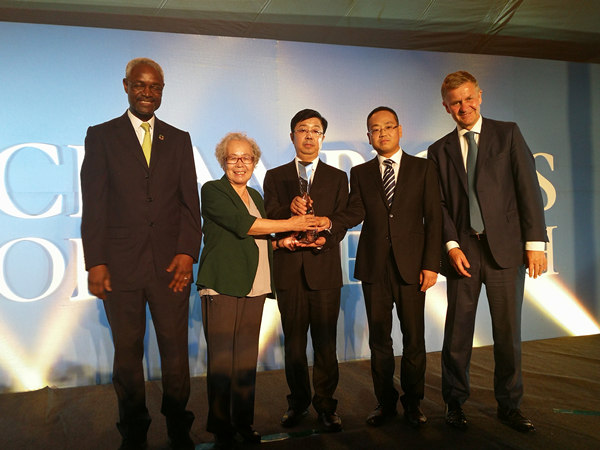

Brown coal, a low grade of coal, has been ignored in China because it's not easily exploited.
But, Victoria state in southwestern Australia, has been seeking brown coal opportunities with China and solving environmental problems by its mining and utilization.
"It's actually quite significant for China to exploit brown coal because its energy needs have grown, and Victoria has realized the commercial values of the cooperation," says Huang Shengchu, president of the China Coal Information Institute (CCII).
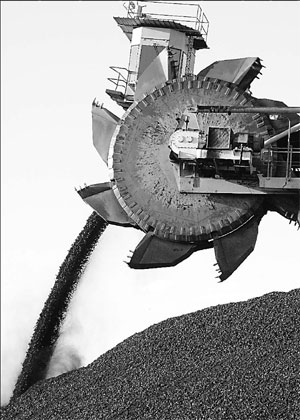
The world's brown coal reserve is estimated at 1,000 billion tons, with 212 billion tons in China. It accounts for about 13 percent of the country's coal, mainly located in the eastern Inner Mongolia autonomous region.
But China has paid little attention to brown coal, Huang says, because of its high moisture content, sometimes as high as 66 percent, and high ash content.
It is used as fuel for steam-electric power generation. However, carbon dioxide emissions from brown coal fired plants are generally much higher than for black coal plants.
Because of its low energy density, brown coal is also inefficient to transport and often has to be burned in power stations close to the mines, such as in Australia's Latrobe Valley.
Brown coal is not suited for deep underground mining, but for opencast mining (extracting coal from seams at shallow depth), a technique with which China has little experience, Huang adds.
"We need to learn advanced technologies and management experiences from countries which have working on brown coal mining for a long time, such as Australia," Huang says.
"The measures and experiences of environmental treatment and protection are urgently needed for China," Huang adds.
Victoria is home to the world's largest known reserves of brown coal. The total brown coal resource in the Latrobe Valley is estimated at 394,000 million tons, with a coal reserve of 50,000 million tons.
"We also have extensive brown coal mining experiences and lots of scientists, enterprises and innovation bodies have been working on technological research and innovation," says Peter Batchelor, minister for Energy and Resources of the Brumby Government of Victoria.
As few other countries in the world which have abundant brown coal reserves, Australia is willing to work with China, focusing on developing new and cleaner ways to extract and use brown coal reserves, as well as carbon capture and storage technologies, he says.
"China and Australia share many objectives, especially in ensuring a healthy energy supply and reducing green house gas emissions," Batchelor says, "It provides us with a possibility to work together."
IDGCC project
A technological brown coal project has begun between Harbin Power Equipment Company, one of the largest power construction companies in China, and Victorian energy technology company HRL, with its Integrated Drying Gasification Combined Cycle (IDGCC) technology.
IDGCC is one of the most promising technologies in power generation using low-grade coal and it is able to meet the most stringent emissions requirements.
It dries the brown coal before it is used for fuel, and uses an air blown fluidized gasifier to convert brown coal into gas. And the heat produced by the gasification process can be reclaimed.
By doing so, green house gas emissions can be reduced by 30 percent and 50 percent of the water can be saved.
Under the project, IDGCC equipment will be produced in China, then shipped to Australia for a new brown coal-fired power plant with a capacity of 0.5 million kW, which is expected to start construction at the beginning of next year.
"The Australian government and the state government have committed about $140 million to this project, which is just one example of our commitment to developing new clean coal technologies," Batchelor says, "It will see the development of the world's largest commercial scale clean coal technology plant."
"Besides, the state government is also inviting international investment in developing technologies for other high-value uses of brown coal, such producing diesel fuel, ammonia, petrochemicals and hydrogen," Batchelor says.
He says that by forging strong relations with China, it is hoped further projects similar to the IDGCC project can be developed.
CLP Holdings Ltd, Hong Kong's biggest power utility, has agreed with TRUenergy company, a Melbourne-based solar system developer, to construct a solar power station in Victoria, which will be the largest in the southern hemisphere.
TRUenergy will contribute an initial $6.5 million to develop a two mW heliostat concentrated photovoltaic pilot plant, subsequently investing up to $268 million to build the remaining stages of the 154 mW project in northern Victoria.
It will be capable of powering 45,000 homes and is scheduled to be completed by 2010.
In April, the world's largest carbon capture and storage (CCS) facility also opened and Victoria is willing to cooperate with Chinese enterprises specializing in this area.
"It is important that developed and developing nations work together to tackle climate change and identify practical steps to making real cuts in greenhouse emissions, while securing energy sources for future generation," says Batchelor.
"In Victoria, what we are doing is transforming new technologies from the research and development scale to demonstration projects and working out how to deliver them on a commercial scale," he says." Victoria is willing to be a laboratory open to China and any other countries."
(China Daily 05/12/2008 page4)


